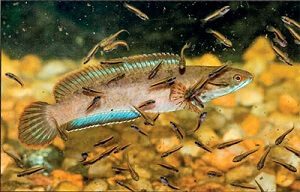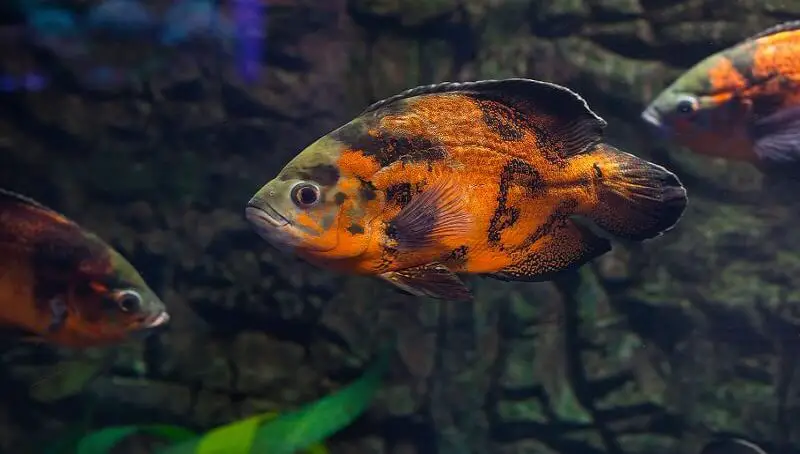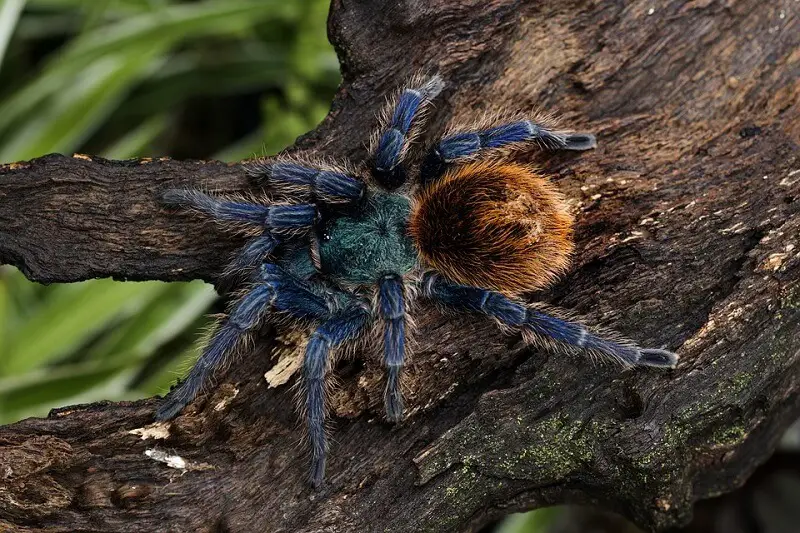If you’re an aquarium owner, then getting a carnivorous fish can be an interesting idea. But you should really learn about some of the most important requirements for taking care of these fish before going to the shop to get one.
You will find all kinds of fish in the different water bodies all around the world. Up until now, scientists have managed to identify over 25,000 species. These aquatic creatures can further be classified into three different groups: omnivorous, carnivorous, or herbivorous fish.
When it comes to herbivorous fish, like herbivorous land animals, they will eat a plant-based diet, which means they would go through algae, aquatic plants, and plant-based substances that can be found inside the water. On the other hand, carnivorous fish will eat a diet made entirely of the meat and flesh of living organisms. Omnivorous fish are the ones that will have no issues surviving on either of these diets, either plants or animal meat.
Carnivorous Fish List
There are a lot of different species of fish that would fall into the carnivorous category. These creatures will either eat live or dead organisms or parts of their meat. Most people already know about some of the most popular carnivorous fish like the moray eels, barracuda, and of course, sharks, all of which being saltwater fish. You’ve surely also heard of the incredible piranha, a carnivorous fish living and hunting in the Amazon. But these are just a handful of all the different carnivorous types of fish living in all kinds of water bodies all around the world. Among them, you will find the ones below.
- Weather Loach
- Tuna fish
- Trigger fish
- Tilapia fish
- Squirrelfish
- Soldierfish
- Snapper fish
- Sharks
- Sea Basses
- Scorpionfish
- Salmon fish
- Rosy Red Minnows
- Puffer fish
- Porcupinefish
- Piranha fish
- Pipefish
- Pencilfish
- Oscar fish
- Marlin fish
- Killifish
- Hawkfish
- Hatchet fish
- Hamlet fish
- Halfbeak fish
- Guppies
- Grouper fish
- Gramma fish
- Frontosa
- Electric Catfish
- Dottybacks
- Carp fish
- Cardinal fish
- Black knife fish
- Bichir fish
- Betta fish
- Bass fish
- Banjo Catfish
- Arowana fish
- Archerfish
- Apistogramma fish
- Angler fish
- Aacara fish
Having a Freshwater Carnivorous Fish as a Pet
 There are a lot of people that would just love having carnivorous fish in a freshwater aquarium as well. However, you should keep in mind that these types of fish will pose a risk to their fish tank companions, as well as their owners. This is why you will have to abide by certain restrictions when you want to adopt these creatures.
There are a lot of people that would just love having carnivorous fish in a freshwater aquarium as well. However, you should keep in mind that these types of fish will pose a risk to their fish tank companions, as well as their owners. This is why you will have to abide by certain restrictions when you want to adopt these creatures.
Even so, there are a few smaller types of carnivorous fish that you will be able to add to a freshwater aquarium without a lot of issues. Some of the fish on the above list, like the Arowana fish, Oscar fish, Black Kife fish, Rosy Red Minnows, Dwarf Pufferfish, or the betta fish are decent options for a smaller aquarium.
You can also get either smaller species like the moray eels or bigger ones like the barracudas, but they will usually require a larger aquarium and before getting them, you will have to get permits from local authorities.
The Food of Carnivorous fish
First off, you will have to learn about the precautions needed when it comes to actually feeding a carnivorous fish. One of the most important rules is to avoid adding to the tank any fish that are on the menu of the carnivorous fish because they are very opportunistic predators. Some species, though, might not hurt other fish in the tank, as long as you take care of their feeding schedule.
A carnivorous fish can be fed either frozen food or live food. Considering that they are natural hunters, giving them live food might make them really excited. You will usually feed a larger carnivorous fish with some larger types of feeder fish, while medium-sized fish will be fed with either daphnia or kelp.
You can even feed these fish with whatever leftover meat items people usually eat. You can even give them cooked meats like poultry venison, lamb, ham, and even beef, from time to time. Keep in mind that if you give your fish cooked meat, this food shouldn’t be treated with any culinary ingredients or sauces.
You will also have to take into account the eating habits of such fish and prepare accordingly. You can always go the easier path and get frozen fish food, like bloodworm, different shrimp types, or shellfish, if you don’t have live food around you to give them.




